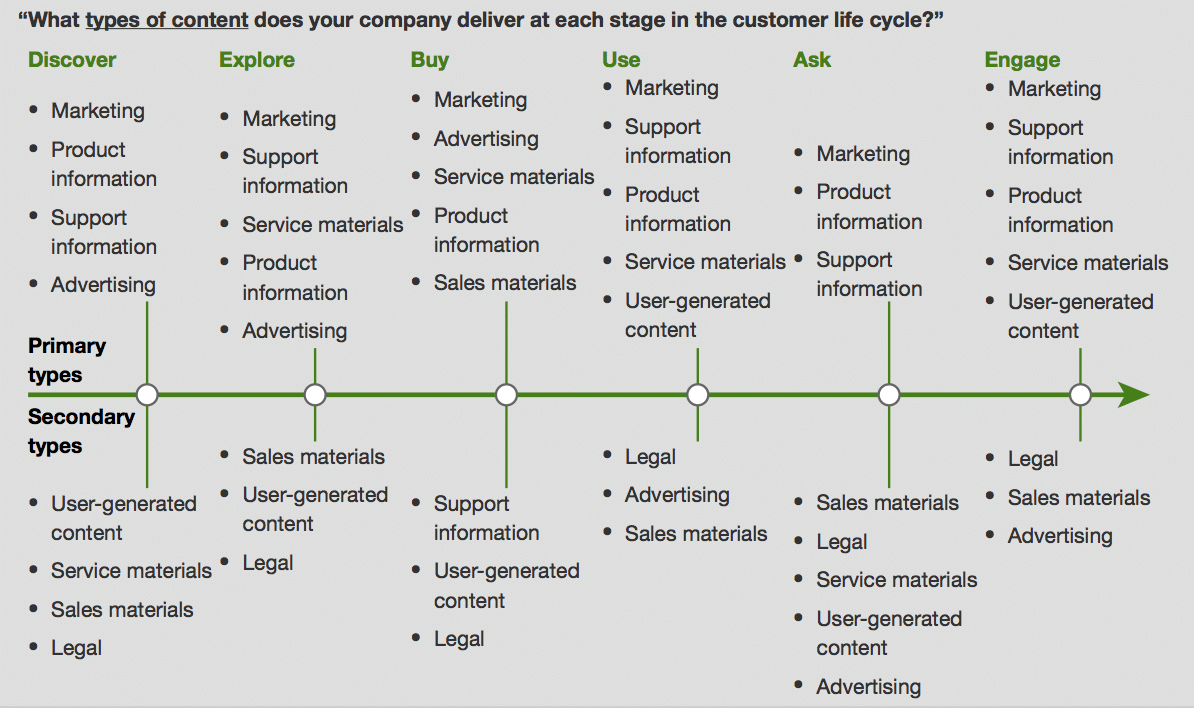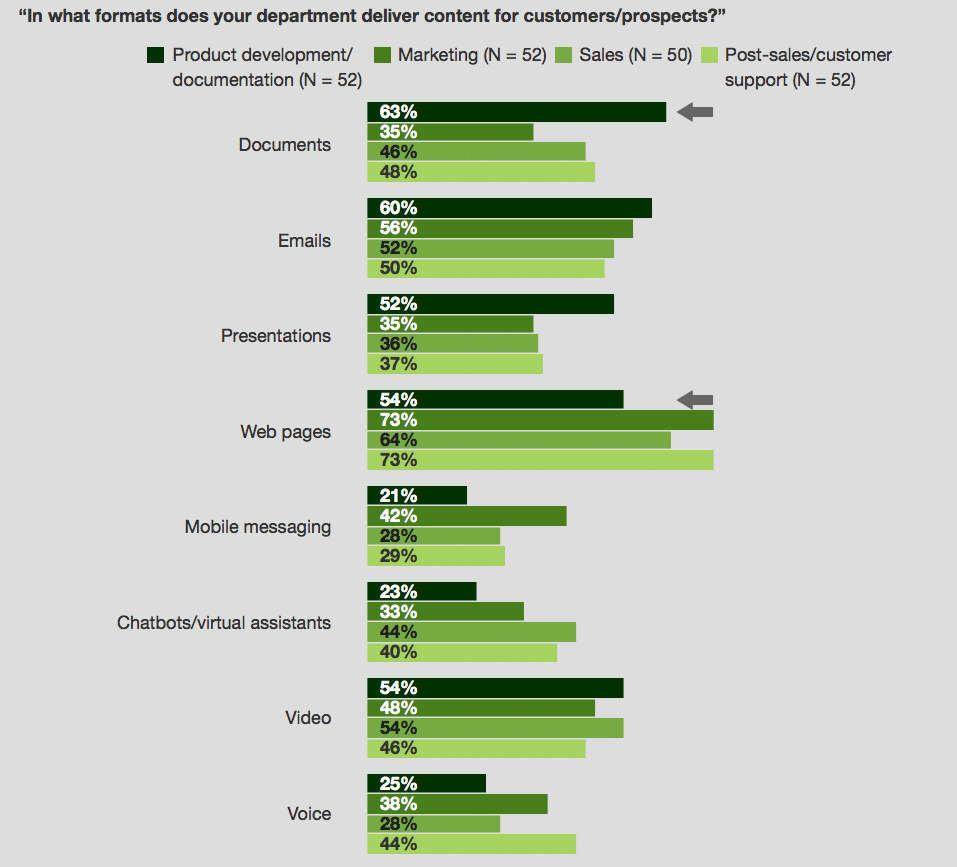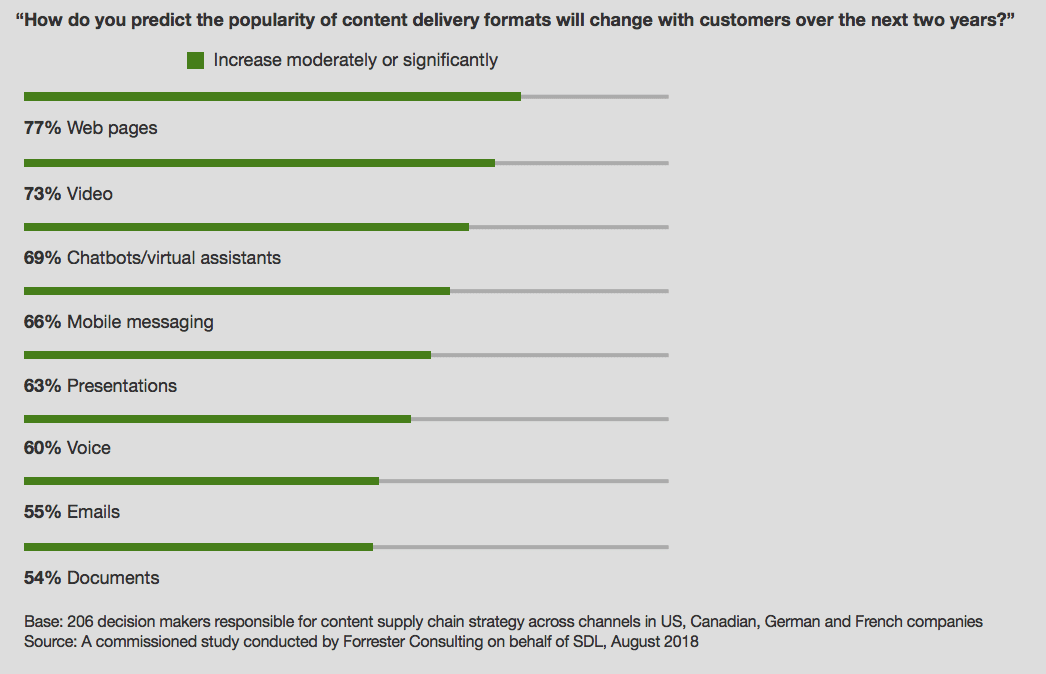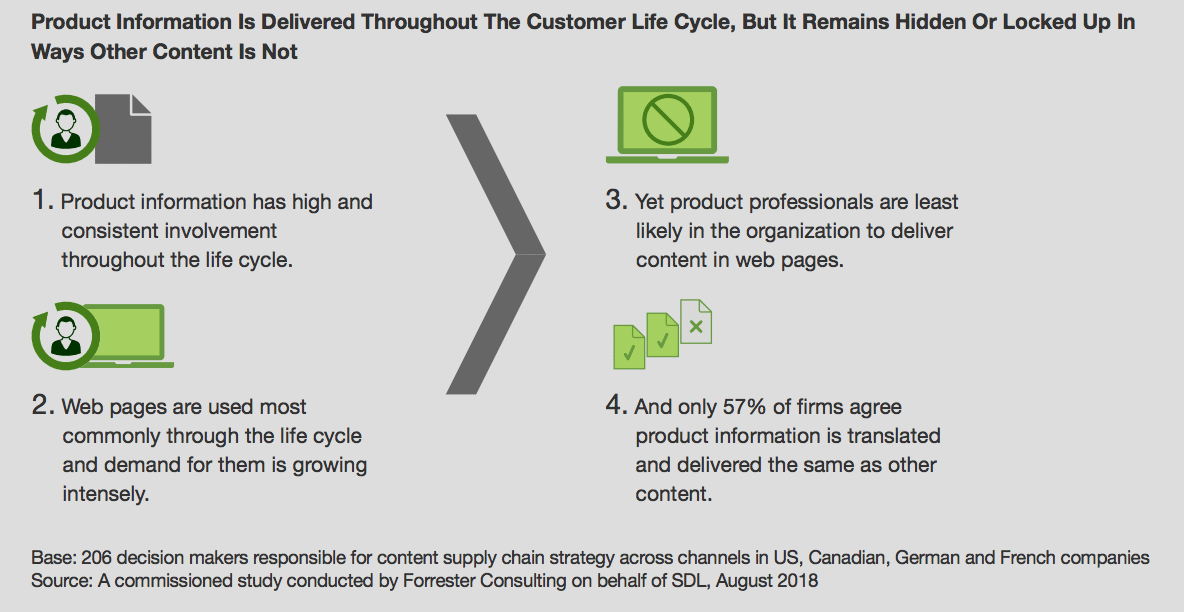New research from content creation, translation and delivery firm SDL outlines six recommendations for companies looking to unlock the strategic power of an intelligent content supply chain in 2019—giving them the ability to engage with anyone, anywhere, in their own language and device of choice.
The firm’s recent study, conducted by Forrester Consulting, Today’s Content Supply Chains Prevent Continuous Customer Journeys, reveals that companies need to develop a Global Content Operating Model (GCOM), a framework that aligns people, technology and processes across a company, helping them mature the way they create, translate and deliver content to their customers. This helps brands handle the growing volume and velocity of content required to engage with worldwide audiences.
The study also found that brands rely too heavily on disjointed technologies, including a collection of Web Content Management Systems, network drives, and document management systems, supported by poorly orchestrated human translation, to build customer experiences on a global scale. Internal organizational silos also add to the complexity involved in providing continuity across the presale, sale and post-sale phases of the customer journey.
“To reach the desired end state of intelligent content, companies need to build for the future today,” according to that study. “They need to rethink their current processes, technology, and organizational structures to be prepared for a future where the strategic value of content continues to grow and determines the difference between company success and failure.”
“The result of organizational and technological disconnects is poor, fragmented experiences and frustrated customers. At a time when customers are turning online dozens of times a day, that’s an enormous missed opportunity,” said Peggy Chen, chief marketing officer at SDL, in a news release. “By commissioning this study from Forrester Consulting, we have uncovered the key problems and developed a set of six recommendations that outline a path for brands to consider in 2019 when evolving their content supply chain.”
1. Take Control of Your Content Supply Chain
The volume and velocity at which brands create content is out of control, and it’s only going to become more complex—93 percent of brands say they will produce more content in the next two years. Half estimate the volume of content will increase by more than 30 percent (and a third estimate by more than 40 percent), according to the Forrester Consulting study. The answer to fixing this is to regain content control across the organization. The GCOM can help brands achieve this, moving from a manual operating model towards automated and even autonomous for global content creation, translation and delivery.
2. Explore Intelligent Content Platforms
Only about one third of brands believe they provide customers with a continuous customer experience, according to the study. Brands looking to deliver meaningful and consistent customer experiences, across multiple channels and languages, will need vast amounts of content – more than it’s possible for marketing teams to create. Companies will require an intelligent, flexible and AI-driven architecture. Applying intelligence to a content ecosystem will help companies automate tasks, and reduce the cost involved in managing extreme amounts of content.
3. Rethink How Content is Constructed
The popularity of video, chatbots, virtual assistants, and other emerging channels, are on the rise. Brands expect these to significantly grow over the next two years, yet only 29 percent say that they are very satisfied with the ability of their tools to engage with customers across these channels, and deliver a continuous experience, according to the study. Rethink how content is constructed and shared across teams so that it can be adapted for these new delivery models with minimal rework and maximum impact. This will help brands deliver content faster across different channels, languages and audiences.
4. Be Ready to Adapt Content for Any Channel
Customers want content, across multiple channels, at any time of day. Therefore, how do brands create enough content to meet demand? Little more than half of firms have a centralized and standardized toolset for the creation (51 percent), translation (54 percent), and delivery (56 percent) of content across regions and languages. Bringing systems together to increase the delivery of easily consumed content, ensures its consistency across all stages of the buying cycle.
5. Realize That Customers Want Product Information
Buyers and users want the details about products and services not just after the deal is done, but during the buying cycle to understand their investments and make more informed decisions. Brands understand this trend. Three-quarters (77 percent) admit that keeping product information relevant and up-to-date is critical to a good customer experience. They also agree that improving access to product information would have the single greatest positive impact on customer experience—more so than any other type of content. Brands need to be ready to deliver everything from production manuals, videos and spec sheets to customers, in their own language and to the highest standards.
6. Leadership Should Drive Change
According to the study, 82 percent of firms agree content is critical to their company’s success in achieving top business objectives. Despite this, three quarters (80 percent) believe that current content supply chain challenges impede their ability to deliver on top business objectives. Vice President and C-level executives should be the driving force behind digital change. They have the advantage of seeing cross-departmental, global activities and may be in a better position to spot broken or redundant processes. Improved content supply chains lead to robust departmental and business-wide benefits. Companies gain improved productivity, higher customer engagement, increased conversion rates, and increased customer satisfaction, among other benefits.











